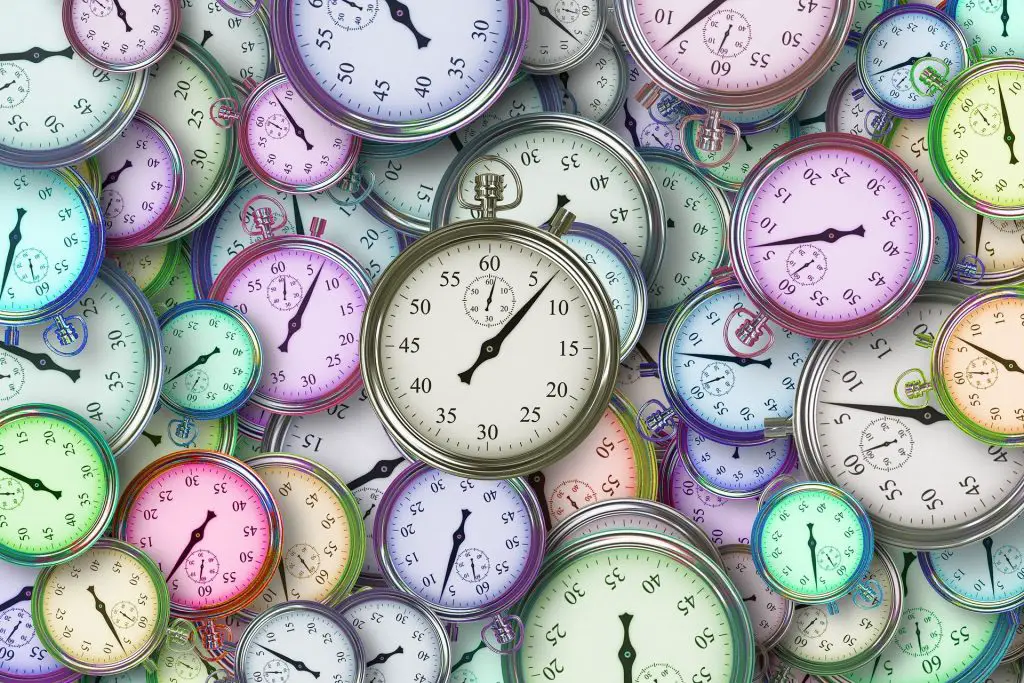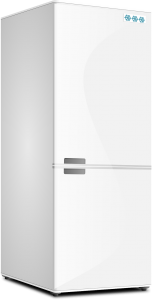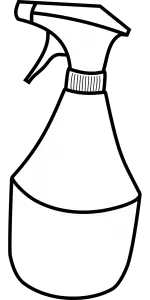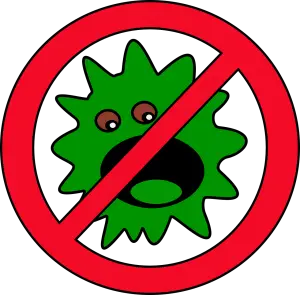Disclosure: This post contains affiliate links and I may earn a small commission if you purchase through these links.
Out of all the energy-efficient devices in my house, the fridge water filter may just be my favorite! You get clean water without any pollutants and at a much lower cost than plastic bottles. Besides, you won’t throw plastic into the trash, which is excellent news for sea turtles.
All that being said, water filters are intricate devices; they need regular maintenance if you want yours to last. Plus, you’ll want to ensure you’re drinking clean water, or else you’ll be rendering the filter useless.
In this article, I’ll walk you through the detailed steps of cleaning your fridge filter. I’ll also include everything else you may want to know about the matter. Buckle up for this comprehensive guide!
Why Do Water Filters Need Cleaning?
Water filters’ primary job is to clear the drinking water from any pollutants or bacteria. Our tap water is full of those because it’s chlorinated. Although the chlorine is there to remove bacteria in the first place, it becomes a pollutant itself after a while. That’s when the water filters come in to remove the residual chlorine from your drinking water.
Every time you use your water, its efficiency decreases. And this is normal. Imagine the residues that your filter is taking away from the water. They get trapped and buildup over time.
Eventually, the water filter will become clogged. Even worse, at some point, the accumulated residues will start to make their way into the water instead of filtering them. That’s why you need to clean it regularly. That way, you get it to be new again, and its efficiency will have a restart.
How Often Do Water Filters Need Cleaning?

How to Clean Fridge Filter in 6 Steps – Hassle-Free and Quick!
Step 1: Prepare Your Fridge and Locate the Filter
The first thing you should do is unplug your fridge from the wall socket. It may sound too obvious, but some people still miss it. After you do that, locate the water valve and turn it off completely. It’s usually behind the fridge. If you can’t find it for any reason, you can opt for closing the main water valve till you’re done.

Now, it’s time to locate the water filter. On most fridges, the water filter will be in the bottom grille. Alternatively, it can be inside the refrigerator in the upper right corner. If you have an old-fashioned fridge, you’ll likely find your filter on its outside. It’ll be on the supply line of the water.
When you look at all these places I mentioned, look for a wide round tube. Filters usually come with a width of 3–4 inches; you’ll quickly identify them.
If you can’t find your filter in any of these places, you’ll have to resort to checking the owner’s manual.
Step 2: Remove the Filter
Now, it’s time to locate the water filter. On most fridges, the water filter will be in the bottom grille. Alternatively, it can be inside the refrigerator in the upper right corner. If you have an old-fashioned fridge, you’ll likely find your filter on its outside. It’ll be on the supply line of the water.
When you look at all these places I mentioned, look for a wide round tube. Filters usually come with a width of 3–4 inches; you’ll quickly identify them.
If you can’t find your filter in any of these places, you’ll have to resort to checking the owner’s manual.
Step 3: Soak the Waterlines
The water lines will be holding all the deposits and buildup of water pollutants. That’s why cleaning them right away won’t work. Instead, you’ll have to soak them for a while in vinegar or any cleaner.
Prepare a solution of warm water and some vinegar or any detergent you have. Next, it’s time to get the liquid into the waterline, which is a bit challenging. To do this, you’re going to need a funnel.
Secure your funnel on the water’s line end, and close the other with anything you have lying around. Then, pour your cleaning solution into the funnel until the waterline is full to the brim. Afterward, remove the funnel and close both ends of the waterline to prevent the cleanser from coming out. Leave the line soaked for about 10–15 minutes.
Step 4: Clean the Reservoirs

After you leave your waterline soaking, it’s time to clean the reservoirs, an essential part of the fridge filter. You’ll likely find your reservoirs located at the fridge’s base. In most models, they’re in the grille or inside the refrigerator’s door.
When you find your reservoir, the first thing you should do is remove it. The process should be easy enough if you’re aware of its mechanism. If you’re not, you can always open the manual for reference.
In my case, I only had to hold its top in a secure grip and twist it counterclockwise. Then, I kept moving it in a shimmy motion till it jumped out of its place.
For cleaning the reservoir, tilt it over a trash basket to remove everything inside. You’ll be surprised by the amount of sediment you’ll find inside. After you’re done with that, it’s time to soak it as you did with the waterline. You’ll have to submerge it entirely in the cleansing mix, but this time leave it for 10–30 minutes.
Step 5: Remove the Reservoir and Water Line from Soaking
The next step is to wash and flush both the reservoirs and the waterline. Starting with the waterline, open one end of it and let the cleaning solution pour out.
Then, flush it by running clean water through the lines. That way, the water carries all the sediments and cleaning solution and goes out of the other end.
As for the reservoir, the procedure won’t differ much. You’ll have to run it under a stream of cool water, so any residue of the solution will rinse off. After you finish, make sure the water running through the reservoir is free of smell and color. If it is, then you did your job properly.
Step 6: Put Everything Back in Its Place
After your waterline and reservoir are clean, it’s time to reattach them and get everything back to where it was. Don’t forget to turn the valves back on. The first time I cleaned my fridge filter, I forgot and I wondered for a few minutes why the dispenser wasn’t working…
One more thing to do is clean the nozzle of the dispenser. Most people usually forget to do it, but sometimes it’s full of residue. You’ll just have to wipe it clean using a damp cloth.
Lastly, turn the valve on and run water one last time to make sure everything is clean. You can place any bucket or container under the dispenser and check if the water is clear.
3 Things That’ll Happen If You Don’t Clean your Fridge Filter
Not keeping your filter clean will be noticeable soon. You’ll inevitably see and taste some changes in your water. Here are the three main issues that may occur.
The Filter Will Clog
A fridge filter can only do its job if properly maintained. Over time, debris and contaminants will fill it, and it’ll get clogged. At first, you may not notice it. The water will pass by unfiltered, but that’s as far as it’ll come.
However, some months later, the filter will stop dispensing water altogether. That’s when you’ll know for sure it’s done servicing you.
The Carbon Layer Will No Longer Work
The thing about the carbon layer is that it won’t stop working after it reaches maximum capacity without cleaning. It’ll stop doing its job, but the water will still pass through it. In a way, it’ll be tricking you into thinking it’s working, when in fact, you’re getting water full of pollutants.
That’s because the carbon layer works in a straightforward way. As long as its pores and spaces are open, it’ll filter the water free of contaminants. That said, when the pores are full, it won’t stop the water from flowing, but it’ll stop catching the pollutants in it. Therefore, you’ll still be getting unclean water.
Bacteria Will Grow in Your Filter

Leaving your filter without cleaning may cause bacteria to grow inside. We all know bacteria love moisture, and where would it find more moisture than in a water filter? I know you may think cleaning once every six months will get rid of it, but eventually, it won’t make the filter work any better.
Will the Water Filter Need Replacement?
Anything that touches your drinking water will eventually need replacement. Be it a water filter, a bottle, a purifier; it can’t go on forever. Some people may argue on the point that the water already passes through treatment before it reaches your line. That means you don’t have to pay the extra cash for replacing your filter once it gets old, right?
I’m of the opinion that you’ll still have to replace the filter. Bear in mind that your water comes a long way from the local water company to your dispenser. The extent to which this happens depends on many factors, such as the proximity of the cleaning plant and the quality of its operation.
The most vital part of the water filter is the carbon layer. This layer is responsible for trapping all bacteria and unwanted particles. When pouring water on this layer for a long time, it’ll inevitably clog, and its pores will no longer be efficient. So, passing water through it will make no difference; it may even make matters worse.
All of the things I listed should be reason enough to replace your filter. It’ll cost you a bit, but at least you’ll be ensuring your family is getting clean water.
When Is It Time to Replace Your Fridge Filter?
There are a couple of signs that’ll tell you when your fridge filter has had enough. Although some of them aren’t easy to realize or identify, some signs will leave no doubt that you need a new one.
Keep them in your mind, so when you see one of them in your regular observation, you know it’s time to say goodbye to the fridge water filter and get a new one.
The Water Tastes or Smells Odd
As we said earlier, the taste of the water will change when your filter is clogged. It won’t be purifying the water. When you’re used to the clear, pure taste of filtered water, you realize in an instant when there’s any change in it. It doesn’t matter how slight or insignificant it is.
If you don’t notice any taste, check the odor. Water should have no smell. If you smell something in it, then the filter isn’t working as it should. That’s your cue to get a new filter.
The Filter’s Lifespan Ends
All electronics and devices in your house have a lifespan. The manufacturer’s manual or instructions will state when you need to replace them. So, it’s essential to go through your water filter’s manual and know its lifespan.
Most filters will have a lifespan of around six months at least. Afterward, they’ll need replacing. You don’t have to wait for anything to happen. Once the manufacturer’s recommended period of time passes, you should replace it.
The lifespan will be affected by many factors though, causing variations. For example, if you have a family of two, the filter should live longer than six months because your consumption won’t be as frequent.
On the other hand, if you have a large family, you’ll use the filter more, which will call for a faster replacement.
The Water Pressure Decreases
If you notice the water flowing from the filter’s dispenser at a lower rate than usual, this may be a sign your filter is saying goodbye. When this happens, it’s usually because the filter’s bores are clogging, and the carbon layer is reaching full capacity.
More than often, this condition is irreversible, so you’ll have no other choice but replacement.
Final Thoughts
Now that you know in detail how to clean your water filter, your water should stay clear and your filter intact!
Ignoring the cleaning routine will have a toll on the water you drink and the filter’s lifespan. That’s why it’s always better to be one step ahead and clean it before it gets too late. Plus, the process doesn’t take much time. And it’ll save you the hassle of repairing or replacing the filter more frequently than you should.
Further Reading
